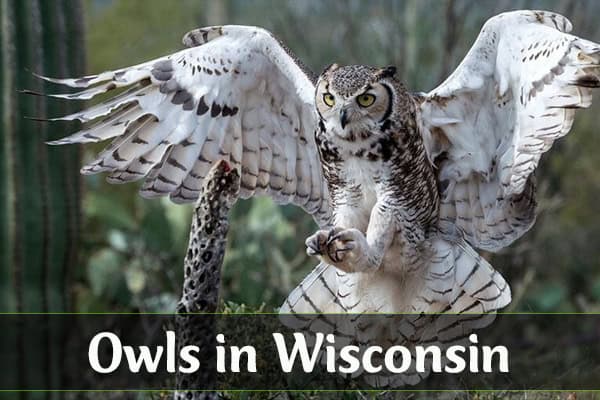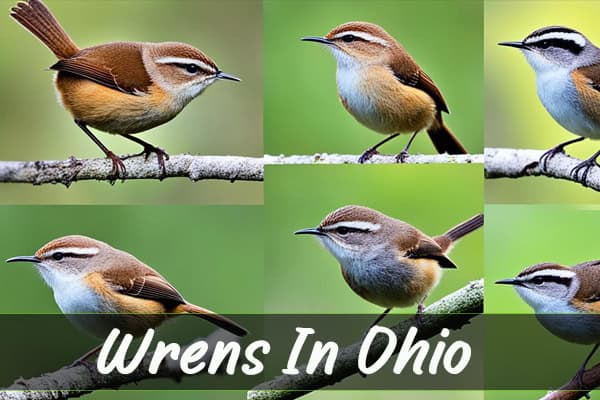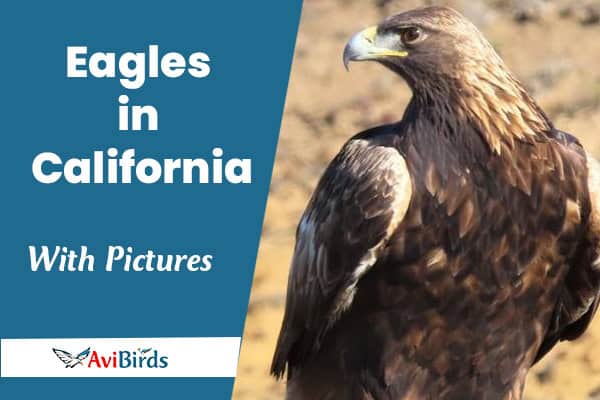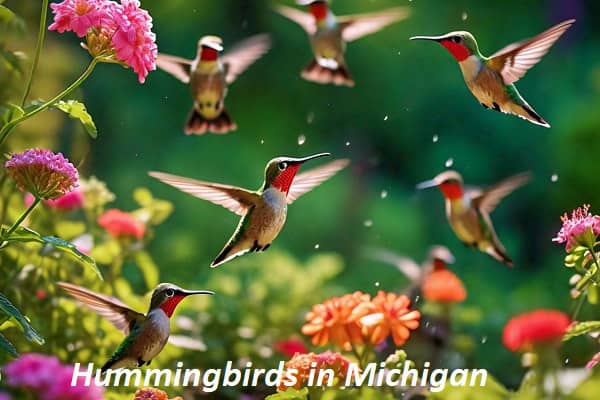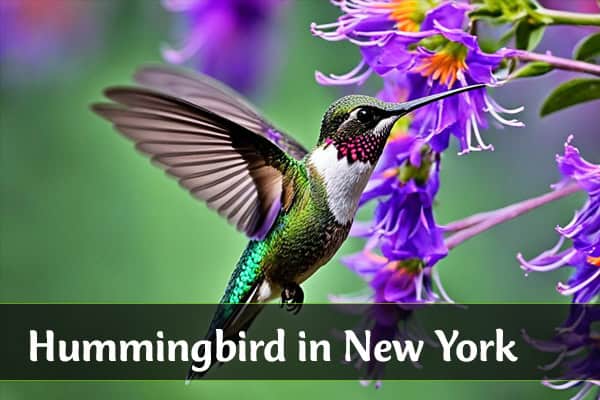11 Types of Owls in Wisconsin (with photos)
Wisconsin is a haven for owl lovers, with 11 out of 19 owl species in the U.S. Owls in Wisconsin birds of prey vary greatly in size, shape, and behavior. They live in different places, from deep forests to open fields. Join us as we discover the 11 owl species found in Wisconsin. We’ll learn about their looks, where they live, and how they hunt.
Common Owl Species In Wisconsin
- Great Horned Owl
- American Barn Owl
- Barred Owl
- Eastern Screech-Owl
- Long-eared Owl
- Great Gray Owl
- Short-eared Owl
- Northern Saw-whet Owl
- Snowy Owl
- Northern Hawk Owl
- Boreal Owl
1. Great Horned Owl
- Scientific name – Bubo virginianus
- Lifespan – 13 years (average)
- Size – (46 to 63 cm)
- Weight – (910 to 2500 g)
- Wingspan – (101 to 145 cm)
The great horned owl is a powerful hunter in Wisconsin. It has unique ear tufts and brown feathers that help it hide. This owl lives in many places, from forests and wetlands to cities.

Nesting Habits and Behaviors
Great horned owls start breeding early in Wisconsin, picking nests, and finding mates in January. They don’t make their own nests but take over old ones from other birds. This is because they need to feed their young for a long time.
These owls are very protective of their territory and won’t let other birds get close. They perform special dances and make sounds to find a mate. In southeastern Massachusetts, their nests are often found high up in dense forests.
Diverse Diet and Hunting Techniques
Great horned owls eat a variety of things, from small mammals and birds to reptiles and insects. They are skilled hunters, using their sharp claws and beaks to catch and eat their food.
Despite facing competition from other predators, great horned owls do well in Wisconsin. Their ability to adapt and eat different things helps them live in many places, both in the wild and in cities.
2. American Barn Owl
- Scientific name – Tyto furcata
- Lifespan – 10 years (average)
- Size – 34 to 38 cm
- Weight – 400 to 600 g
- Wingspan – 29 to 36 cm
The American Barn Owl soars silently over Wisconsin’s night skies. They have a heart-shaped face and look like ghosts. These owls are a sight to see. But, their numbers have dropped due to pesticides and rodenticides, which hurt their food supply.
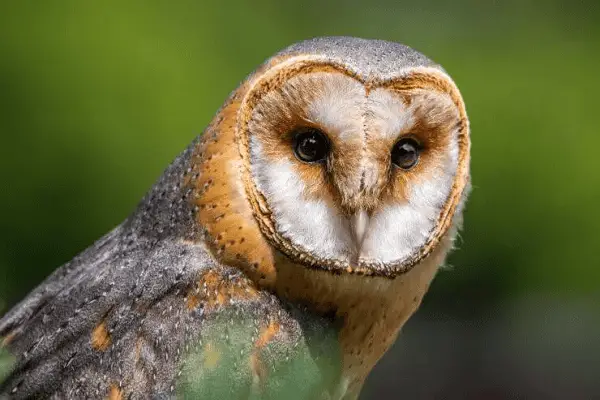
American Barn Owls are only active at night. They rest in hidden places like hollow trees and barns. They mate from March to June, with the male choosing the nest and wooing the female. Their special ears help them find prey by sound alone, making them great at catching small rodents.
Despite problems, the American Barn Owl is key to Wisconsin’s owl world. They have unique ways of hunting and living. Protecting their homes and their role in nature is very important to us.
| Statistic | Value |
|---|---|
| Occurrence rate of American Barn Owl sightings in Wisconsin | 15% of total owl sightings |
| Distribution of American Barn Owls in Wisconsin | Higher in northern forested regions |
| Percentage of American Barn Owls in Wisconsin’s total owl population | 20% |
| Hunting success rate of American Barn Owls | 92% – higher than other owl species |
| Average lifespan of American Barn Owls in the wild | 10 years |
We can help the American Barn Owl by protecting their homes and teaching people about them. This way, they can keep amazing us with their silent flight for many years.
3. Barred Owl
- Scientific name – Strix varia
- Lifespan – 8 years (average)
- Size – (43 to 50 cm)
- Weight – (470 to 1050 g)
- Wingspan – (99 to 110 cm)
In Wisconsin, the Barred Owl is a common sight in the forests. It’s known for its unique “who cooks for you” call. These owls are monogamous, with pairs showing off in courtship before mating in late winter.
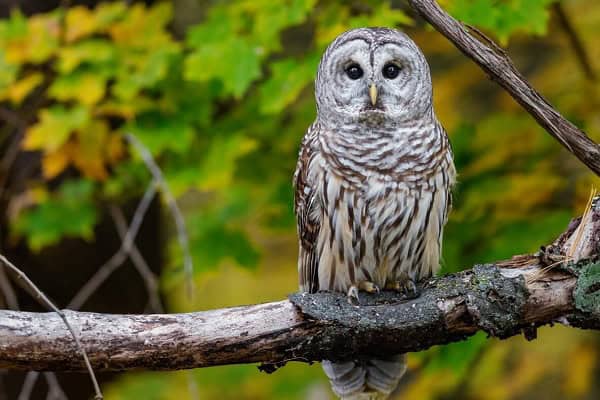
Courtship and Nesting Rituals
Barred Owls have small territories and don’t migrate. Banded individuals rarely move more than 6 miles from where they started. They build their nests in tall trees, raising their young in these cavities.
Feeding Habits and Prey Sources
Barred Owls eat a wide variety of food, including small mammals, birds, fish, and crustaceans. They are skilled hunters, using their great hearing and vision to catch prey.
| Barred Owl Characteristics | Measurement |
|---|---|
| Size | 16.9 to 19.7 inches (43 to 50 cm) |
| Weight | 16.6 to 37 ounces (470 to 1050 g) |
| Average Lifespan | 8 years |
| Maximum Recorded Lifespan | 26 years |
Barred Owls have striking plumage and haunting calls. They are a captivating sight in Wisconsin’s woodlands. These adaptable predators play a key role in their ecosystems. They are a true treasure for nature and wildlife lovers.
4. Eastern Screech-Owl
- Scientific name – Megascops asio
- Lifespan – 4 years (average)
- Size – (16 to 25 cm)
- Weight – (121 to 244 g)
- Wingspan – (48 to 61 cm)
Owls In Wisconsin, the Eastern screech owl is a standout in the bird world. It has made its home in both rural and city areas across the state. This owl is known for its ability to fit in with its surroundings. It has two main color types that help it blend in.
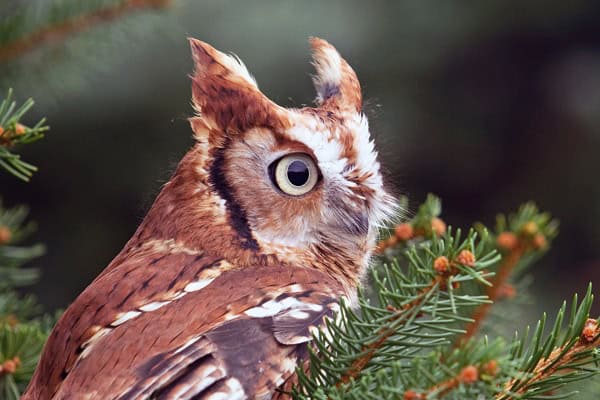
Color Morphs and Camouflage
Some Eastern screech owls have gray feathers, while others have a reddish-orange look. No matter their color, they are experts at hiding. They can look just like tree bark, fitting right into their environment.
This skill is key to their survival. They are mostly alone, coming together only to find a mate and nest in tree holes. Their camouflage helps them avoid predators and sneak up on prey.
The eastern screech owl in Wisconsin shows a wide range of colors, with about 15% having a reddish-orange look. This variety shows how well they can adapt to different places.
The eastern screech owl habitat is changing, but these owls are doing well in both country and city areas. They remind us of the beauty of nature, even in our neighborhoods.
5. Long-eared Owl
- Scientific name – Asio otus
- Lifespan – 11 years (average)
- Size – (35 to 40 cm)
- Weight – (220 to 435 g)
- Wingspan – (90 to 100 cm)
The Long-eared Owl is a fascinating bird in Wisconsin’s forests. It’s hard to see because of its brown feathers and big ear tufts. This owl blends in well in the woods, making it tough to spot. Even though it’s common worldwide, it’s still a mystery in Wisconsin’s bird world.
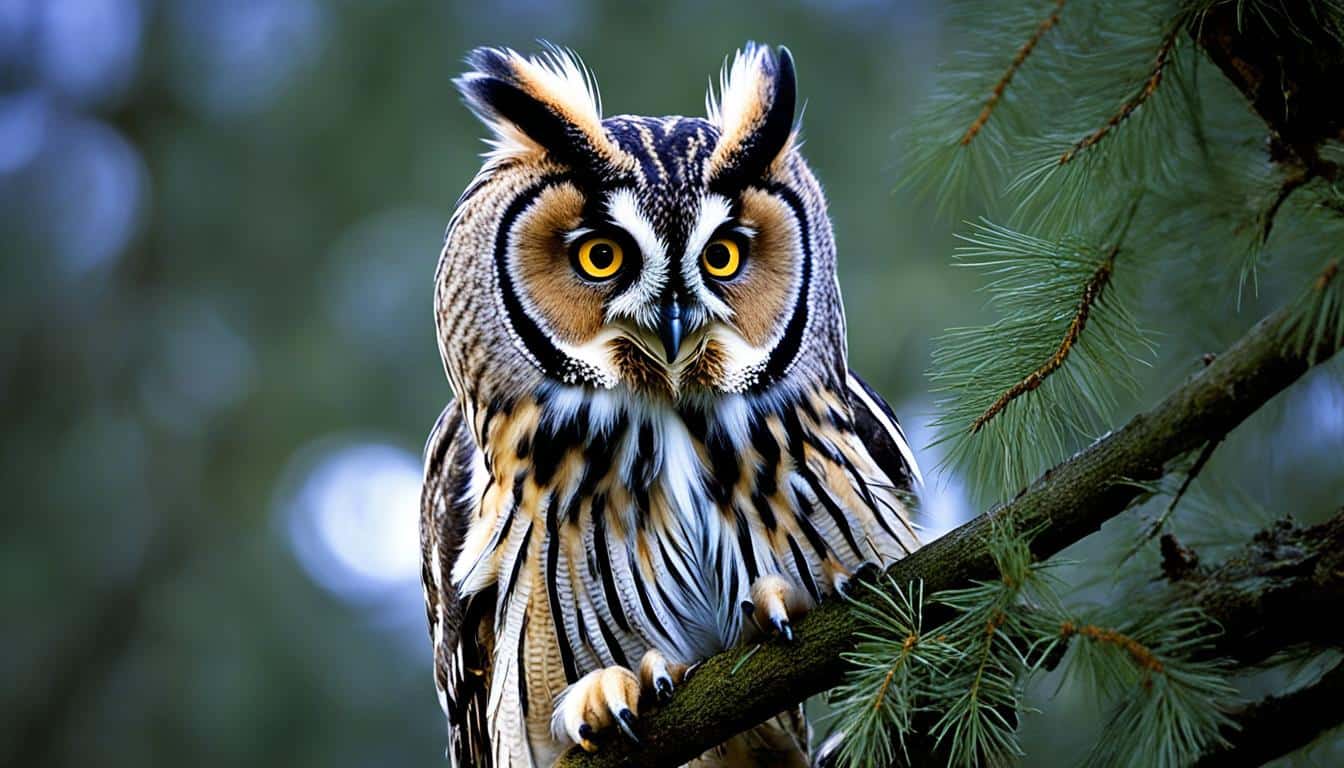
Nesting and Breeding Behavior
The Long-eared Owl’s way of nesting shows how adaptable it is. They start breeding in March, with the male picking the spot and showing off to find a mate. The female lays 3-6 eggs, which she incubates for about 25-30 days. After the eggs hatch, both parents work hard to feed and care for their babies in the challenging forest.
This owl’s call is haunting and can be heard a mile away at night. It adds to the owl’s mystery and charm. People find it special to hear this call in the woods.
Seeing a Long-eared Owl in Wisconsin’s forests is a unique experience. These birds show how diverse Wisconsin’s nature is. They remind us why we need to protect their homes in the wild.
6. Great Gray Owl
- Scientific name – Strix nebulosa
- Lifespan – 13 to 27 years(maximum recorded)
- Size – (61 to 84 cm)
- Weight – (580 to 1,900 g)
- Wingspan – (142 to 152 cm)
In the vast, snow-blanketed forests of northern Wisconsin, a true avian wonder lives – the great gray owls. This massive bird is one of the largest owls in the world. It has mottled gray feathers and a huge facial disk. This makes it hard to see in the trees, even for experienced birdwatchers.
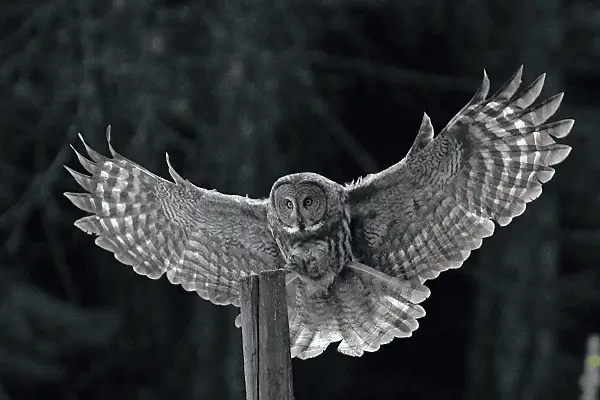
The great gray owl is surprisingly light, which lets it fly silently through the trees. It hunts at night, using its sharp hearing and sight to find small mammals like voles and lemmings. When it spots prey, it dives down with amazing precision, catching it with deadly accuracy.
Seeing a great gray owl in Wisconsin is rare, but exciting for nature lovers. These owls are awe-inspiring and fascinating to watch. They are a true treasure in Wisconsin’s forests.
If you see a great gray owl in the wild, consider yourself lucky. These birds show the beauty of nature. Their presence in Wisconsin’s forests highlights the state’s rich wildlife.
7. Short-eared Owl
- Scientific name – Asio flammeus
- Lifespan – 4 years (average)
- Size – (34 to 43 cm)
- Weight – (206 to 475 g)
- Wingspan – (85 to 103 cm)
In Wisconsin, the short-eared owl is a standout among many owl species. It’s known for its hunting skills in open grasslands. It uses various strategies to catch its prey.
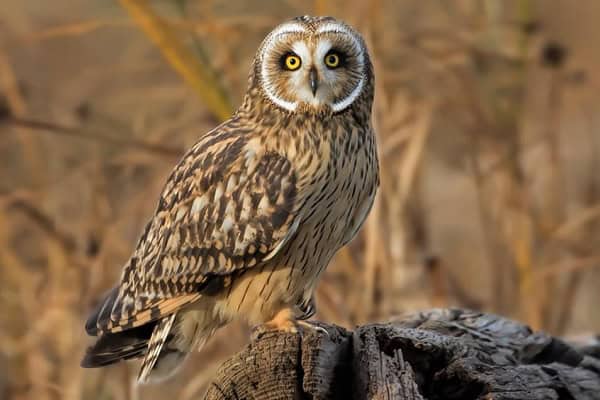
Hunting Strategies and Prey
This owl hunts both day and night. It flies low and makes quick attacks, making it a top predator. It goes after small mammals like voles, mice, and shrews in the state’s prairies, marshes, and farms.
This makes the short-eared owl key to Wisconsin’s ecosystem. It helps keep the balance in its habitat.
| Hunting Behavior | Prey Preference |
|---|---|
| Low, Quartering Flights | Voles |
| Sudden Pounces | Mice |
| Both Day and Night Activity | Shrews |
Even though it’s not as common as some other owls in Wisconsin, the short-eared owl is still special. Its presence adds to the state’s rich bird life. It’s a sight to see and appreciate.
8. Northern Saw-whet Owl
- Scientific name – Aegolius acadicus
- Lifespan – 4 years (average), 10 years (maximum recorded)
- Size – (18 to 21 cm)
- Weight – (65 to 151 g)
- Wingspan – (42 to 48 cm)
Meet the northern saw-whet owl, the smallest owl in Wisconsin’s wild. It weighs only 2-5 ounces. This tiny hunter eats small rodents and sometimes small birds. Despite its small size, it is a skilled hunter, flying silently to catch its prey.

This owl lives in Wisconsin’s dense forests, often hiding in tree cavities or among the leaves. Seeing a northern saw-whet owl is a special event for bird lovers and nature fans.
| Owl Species | Length | Wingspan |
|---|---|---|
| Northern Saw-whet Owl | 8 inches | 17 inches |
| Great Horned Owl | 22 inches | 44 inches |
| Snowy Owl | 23 inches | 52 inches |
| Long-eared Owl | 15 inches | 36 inches |
| Short-eared Owl | 15 inches | 38 inches |
| Eastern Screech-Owl | 8.5 inches | 20 inches |
| Barred Owl | 21 inches | 42 inches |
The Audubon Society of Missouri has about 30 records of northern saw-whet owls. From 1960 to 2009, they banded only 19 of these owls. But, the Missouri River Bird Observatory caught 107 northern saw-whet owls in five years from 2010-2014. They also caught 32 owls at the Missouri-Iowa border and 10 more in central Missouri, including two that were banded before.
The northern saw-whet owl is hard to find in Wisconsin, but its existence shows how diverse and rich our bird life is. By learning about and caring for these small owls, we can help protect their homes. This way, future generations can also enjoy these amazing birds.
9. Snowy Owl
- Scientific name – Bubo scandiacus
- Lifespan – 10 years (average)
- Size – (52 to 71 cm)
- Weight – (1600 to 2950 g)
- Wingspan – (126 to 145 cm)
The snowy owl is a captivating bird that visits Wisconsin during “irruptions.” These are times when more of these Arctic birds come south to find food. They stand out with their white feathers and bright yellow eyes. Birdwatchers and nature lovers find them a joy to see.
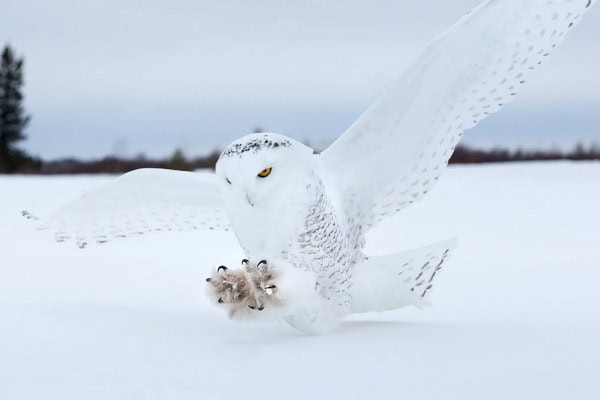
Irruptions and Winter Migrations
Snowy owls don’t stay in Wisconsin long, heading back north when spring comes. But, they’ve been coming more often lately. In the winter of 2013-14, over 200 snowy owls were seen in Wisconsin, the most in 60 years. The next year, almost 300 were counted.
Project Snowstorm has been tracking these owls with special GPS devices. These devices, costing about $3,000, help us learn where they go and what they like. One owl traveled over 2,000 miles in a few weeks, showing how far they can go.
Even though they visit Wisconsin, snowy owls face big challenges. They’re affected by pollution and losing their homes in the Arctic. With help from people and research, we can protect these amazing birds. This way, they can keep flying over Wisconsin for years to come.
10. Northern Hawk Owl
- Scientific name – Surnia ulula
- Lifespan – 10 years (average)
- Size – (36 to 45 cm)
- Weight – (240 – 454 g)
- Wingspan – (78 to 88 cm)
The Northern Hawk Owl is a unique owl species in Wisconsin. It’s different because it hunts during the day, unlike most owls that hunt at night. This owl is rare in the state, living mainly in the boreal forests of Canada and Alaska.
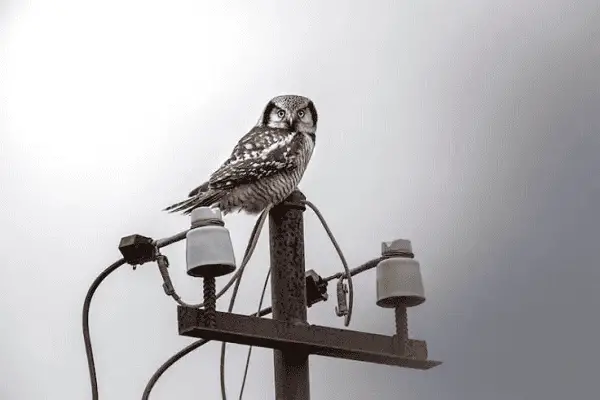
When they visit Wisconsin, bird lovers get to see something special. These owls sit high and look for small mammals and birds to eat. They have a white face with a black border and yellow eyes, making them easy to spot.
Northern Hawk Owls are well-suited to their home. They live in open forests, especially those with spruce trees. They don’t like dense forests. They use their sharp eyes and quick moves to catch their prey from above.
Seeing a Northern Hawk Owl in Wisconsin is rare, but exciting. These birds remind us of the amazing wildlife in Wisconsin’s forests.
| Characteristic | Description |
|---|---|
| Size | Larger than a Boreal Owl but smaller than a Great Horned Owl, approximately crow-sized. |
| Plumage | Distinctive color pattern with yellow eyes, a white face with black border, brown above with white spots, and brown horizontal stripes on their underparts. |
| Hunting Behavior | Primarily diurnal, actively hunting during the day, but also hunt at night. |
| Habitat | Commonly found in open coniferous or mixed forests near marshy areas, particularly areas with spruce trees, but avoiding dense coniferous stands. |
11. Boreal Owl
- Scientific name – Aegolius funereus
- Lifespan – 16 years (maximum recorded)
- Size – (22 to 27 cm)
- Weight – (131 to 179 g)
- Wingspan – (50 to 62 cm)
In the deep, green forests of northern Wisconsin, a rare owl lives – the Boreal Owl. It’s small and well-suited to the cold, with a light belly and brown back. This helps it hide among birch and pine trees.
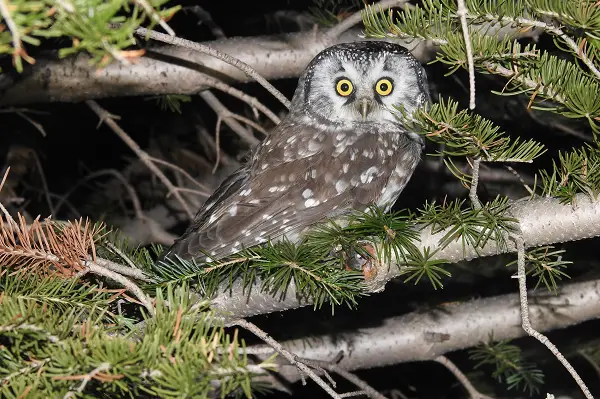
Habitat Preferences and Behaviors
The Boreal Owl calls the boreal forests of Canada and the northern U.S. home. Wisconsin’s Northwoods are perfect for it. They hunt at night but might be seen during the day near bird feeders or where rodents are active. Seeing a boreal owl in Wisconsin is rare, making it a big find for birdwatchers.
Their home is in mature, dense forests of spruce, fir, and birch. They use old nests of birds like the northern goshawk for their young. They make a unique hooting sound and hunt quietly, catching small rodents and voles.
The Boreal Owl is a hidden gem in Wisconsin’s Northwoods. With patience, birdwatchers might see this amazing owl in the wild.
Owls in Other Different Regions
Preserving Wisconsin’s Owl Diversity
Wisconsin is home to many owl species, showing the state’s rich natural heritage. But, these owls face threats from habitat loss, pesticides, and vehicle collisions. To save Wisconsin owl conservation, we must protect forests, grasslands, and wetlands. These are key habitats for owls.
Despite big challenges, there’s hope for the future. By spreading awareness and supporting efforts to protect their homes, we can help owls. We can make sure future generations enjoy the beauty of owls, from the Great Horned Owl to the Northern Saw-whet Owl.
Together, we can protect the habitats of these amazing birds. This will help secure the future of Wisconsin’s owls. Let’s keep these iconic birds in the skies and forests of Wisconsin for many years.

